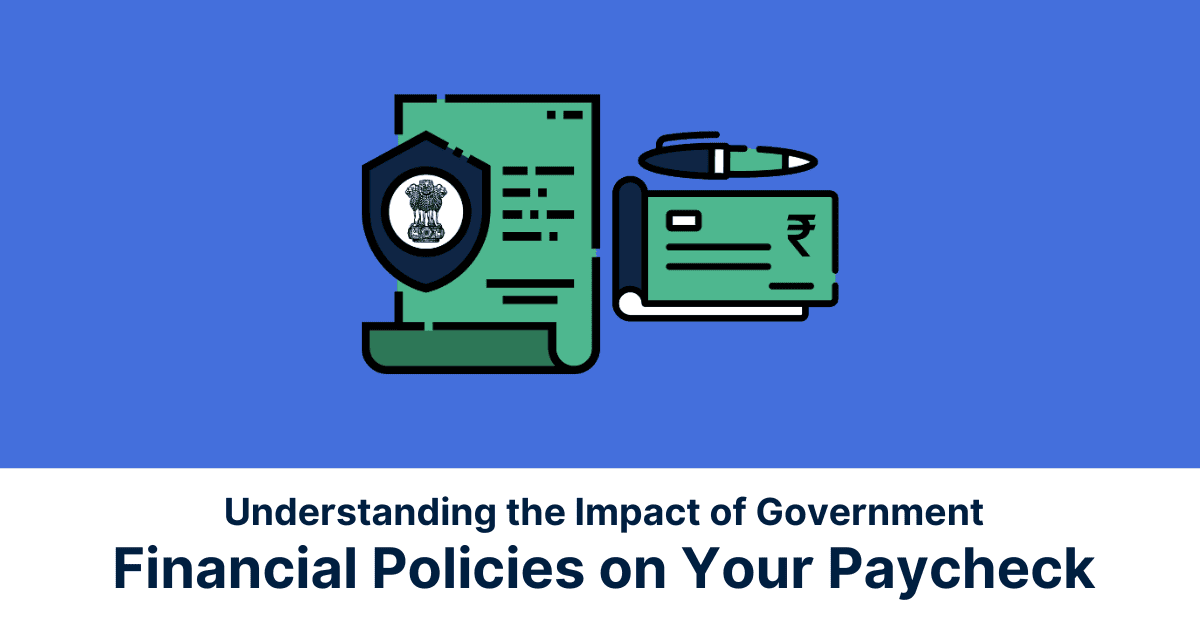The Union Budget 2024, presented by India’s Finance Minister Nirmala Sitharaman for the seventh consecutive year, highlighted India’s steady economic resilience amidst global uncertainties. The budget noted a stable inflation rate approaching the 4% target, with core inflation at 3.1%. This stability reflects India’s agile economic stance and ongoing growth.
The Centre has set a reduced fiscal deficit target of 4.9% of GDP for FY25, down from the 5.1% target announced in the interim budget earlier this year. In the budget speech, emphasis was made on the goal of bringing the fiscal deficit down to 4.5% or less by FY26, adhering to a proposed fiscal glide path by the financial year 2025-26.
Key changes in the budget include revisions to the income tax slabs, capital gains taxes, and customs duties. The government also announced plans to establish industrial parks in approximately 100 cities, aiming to attract Foreign Direct Investment (FDI) and support fiscal deficit reduction.
Detailed Analysis of Key Changes
1. Overhaul of Capital Gains Taxes
The capital gains tax treatment for various types of assets has been changed in the Union Budget 2024. The holding periods for short-term capital gains (STCG) and long-term capital gains (LTCG) have been adjusted. This change will impact investments in equity, debt, gold, mutual funds, and property. The alterations announced in Budget 2024 will affect all the assets one owns.
- Long-Term Capital Gains: The tax rate on long-term capital gains for both financial and non-financial assets will increase from 10% to 12.5%. The exemption limit for these gains is set at ₹1.25 lakh per year.
- Short-Term Capital Gains: The tax rate on short-term gains from specific financial assets will rise from 15% to 20%.
- The exemption limit on capital gains has been raised to ₹1.25 lakh.
- All other assets will continue to attract capital gains tax at existing rates
- Unlisted bonds, debentures, and debt mutual funds will attract capital gains tax irrespective of the holding period
2. Increase in Standard Deduction
In the Union Budget 2024-25, Finance Minister Nirmala Sitharaman announced an increase in the standard deduction for salaried employees under the new tax regime, raising it from ₹50,000 to ₹75,000. This increase allows salaried individuals to reduce their taxable income by an additional ₹25,000, effectively lowering their tax liability.
For example, an individual earning ₹10,00,000 annually will now have a taxable income of ₹9,25,000 instead of ₹9,50,000, resulting in less tax owed and more disposable income. However, this increased deduction is available only under the new tax regime; the standard deduction remains at ₹50,000 under the old regime.
3. Adjustment in Family Pension Deduction
The 2024 Budget comprises a significant increase in the deduction for family pensioners. The deduction on family pensions has been raised from ₹15,000 to ₹25,000.
This increase provides considerable tax relief for families receiving pensions, as it reduces the taxable income derived from the pension. For instance, if a family receives a pension of ₹1,00,000 annually, under the previous deduction of ₹15,000, the taxable amount would be ₹85,000. With the new deduction of ₹25,000, the taxable income decreases to ₹75,000, lowering the tax burden on the pension amount.
The higher deduction effectively means more disposable income for pension-receiving families, helping them manage household expenses and savings better. This move is part of the government’s broader efforts to provide financial relief and support to pensioners.
4. Revision of Income Tax Slabs
In the revised income tax structure under the new tax regime, the following tax slabs have been introduced:
Impact on Tax Liabilities
- Low-Income Group (Up to ₹3 lakh): Individuals earning up to ₹3 lakh annually are not subject to any income tax, providing relief for the lower-income group.
- Middle-Income Group (₹3 lakh to ₹7 lakh): For incomes between ₹3 lakh and ₹7 lakh, a 5% tax rate applies. This bracket benefits from a lower tax rate, which helps in reducing overall tax liabilities, especially for those with incomes on the lower end of this range.
- Upper Middle-Income Group (₹7 lakh to ₹15 lakh): Incomes from ₹7 lakh to ₹10 lakh are taxed at 10%, while those from ₹10 lakh to ₹12 lakh face a 15% rate. For the ₹12 lakh to ₹15 lakh range, the rate is 20%. These rates offer a progressive structure, where tax liabilities increase with higher incomes but remain balanced.
- High-Income Group (Above ₹15 lakh): Incomes above ₹15 lakh are taxed at 30%, maintaining a higher rate for high income individuals, which aligns with a progressive tax system.
5. Abolition of Angel Tax
The abolition of the Angel Tax in India’s 2024 budget marks a significant reform for the country’s startup ecosystem. This tax, introduced under Section 56(2)(viib) of the Income Tax Act, 1961, was a major hurdle for startups, often leading to disputes over valuation methods and substantial tax liabilities.
The tax’s removal will alleviate these challenges, reducing compliance burdens and financial strains on startups. This move is expected to boost investor confidence, particularly crucial given the recent decline in startup funding. It will also enhance the ease of doing business, encourage domestic capital formation, and contribute to job creation and technological advancement.
The removal of these barriers is a strategic step towards creating a more conducive environment for entrepreneurs and investors in India. This change is expected to make it easier for startups to operate and attract investment, supporting the growth and innovation within the ecosystem.
6. Increase in Securities Transaction Tax (STT) on F&O
The increase in the Securities Transaction Tax (STT) on futures and options (F&O) trading to 0.2% is intended to curb speculative trading among retail investors. This change aims to address concerns over the rising involvement of inexperienced investors in these high-risk instruments, which have been linked to significant financial losses.
The heightened STT could reduce market liquidity, as higher transaction costs may discourage frequent trading. For traders, especially those relying on quick profit margins, the increased tax could erode potential gains, making F&O trading less attractive. While this measure may deter speculative activities, it could also impact the overall trading volume in the derivatives market.
A decline in liquidity might lead to wider bid-ask spreads, making it more challenging for investors to execute trades at favourable prices. However, proponents argue that this adjustment could lead to a more stable market environment, as it discourages excessive speculation and encourages a shift towards long-term investment strategies.
Practical Tips for Personal Finance Management Post-Budget 2024
1. Reevaluate Investment Strategies
- Shift Towards Long-Term Investments: With higher STT making frequent trading more costly, consider focusing on longer-term investments like mutual funds, individual stocks, or bonds. These investments can offer more stable returns without the frequent trading costs associated with F&O trading.
- Focus on Core Portfolio: Concentrate on building a core portfolio of diversified assets that align with your risk tolerance and financial goals, rather than speculative, high-risk trading.
2. Diversify Investments
- Include Various Asset Classes: Diversify your portfolio by including a mix of equities, fixed income, real estate, and commodities. This can help spread risk and protect against market volatility.
3. Increase Focus on Financial Education
- Understand Market Dynamics: Educate yourself about the implications of the new tax measures, market risks, and different financial instruments. This knowledge can help you make informed investment decisions.
- Learn Risk Management: Understand the risks associated with derivative trading and other investment options, and develop strategies to mitigate them.
4. Budget for Higher Transaction Costs
- Account for Increased Costs: Factor increased transaction costs due to higher STT into your financial planning. This may involve setting aside a larger portion of your investment budget for these costs or choosing lower-cost investment vehicles.
- Optimise Transactions: Consider consolidating trades to minimise transaction costs and avoid frequent, small trades that may become more expensive.
5. Build an Emergency Fund
- Establish an Emergency Fund: Ensure you have an emergency fund to cover unforeseen expenses or market downturns. This can prevent the need to liquidate investments at unfavourable times.
6. Consult a Financial Advisor
- Seek Professional Advice: A financial advisor can help reassess your portfolio, taking into account the new tax regime and your financial goals. They can offer personalised strategies to optimise your investment approach and manage risk.
7. Explore Tax-Efficient Investment Options
- Leverage Tax Benefits: Look into investment options that offer tax advantages, such as tax-saving mutual funds, Public Provident Fund (PPF), or National Pension System (NPS). These can help optimise your tax liability and enhance overall returns.
Conclusion
With updates to tax slabs, standard deductions, and capital gains taxes, the budget offers both challenges and opportunities. As these changes take effect, individuals and families must reassess their financial strategies to optimise savings and manage tax liabilities effectively.
Key areas of focus include understanding the new tax structure, exploring tax-efficient investment options, and possibly seeking professional financial advice to understand these changes. The government’s initiatives, such as the abolition of the Angel Tax and increased focus on long-term investments, also signal a commitment to building a more robust economic environment. By staying informed and proactive, taxpayers can make the most of the opportunities presented by the new budget while minimising potential downsides.
FAQs
1. How do the new tax slabs affect my take-home pay?
The new tax slabs affect your take-home pay by altering the amount of income tax you owe based on your earnings. Here’s a breakdown of how they impact your take-home pay:
- Lower Tax Rates for Certain Incomes: With the introduction of lower tax rates for specific income brackets (5% for ₹3 lakh to ₹7 lakh, 10% for ₹7 lakh to ₹10 lakh, etc.), individuals in these ranges will see a reduction in their tax liabilities compared to previous rates. This effectively increases their take-home pay.
- Increased Standard Deduction: For those opting for the new tax regime, the standard deduction has increased to ₹75,000, which reduces taxable income and, consequently, the amount of tax owed. This translates to higher take-home pay.
- Progressive Taxation: The new slabs maintain a progressive tax structure, where higher incomes are taxed at higher rates. While higher earners will see a greater tax burden, they will still benefit from the reduced rates in lower brackets.
2. What strategies should I consider for capital gains tax planning?
1. Utilise Exemptions and Deductions:
- Invest in Tax-Exempt Assets: Certain investments like equity mutual funds or specified bonds may be exempt from capital gains tax or offer favourable tax treatment.
- Utilise Exemption Limits: For long-term capital gains (LTCG), the exemption limit of ₹1.25 lakh per year can be used to offset gains. Ensure you claim this exemption where applicable.
2. Timing Your Sales:
- Hold Assets Longer: Long-term capital gains (on assets held for more than 1 year) are taxed at a lower rate compared to short-term gains. Consider holding onto investments to benefit from lower tax rates.
- Plan Your Sales: If you anticipate high gains, plan to sell assets in a year when your overall income is lower to reduce the impact of taxes.
3. Offset Gains with Losses:
- Tax-Loss Harvesting: Sell underperforming assets at a loss to offset gains from profitable investments. This can help reduce your taxable capital gains.
3. How does the increased standard deduction benefit me?
The increased standard deduction benefits you by reducing your taxable income, which in turn lowers your overall tax liability. Here’s how it helps:
1. Reduces Taxable Income:
- For Salaried Employees: With the standard deduction increased to ₹75,000 under the new tax regime (from ₹50,000 previously), you can subtract this amount from your total income. For example, if your annual salary is ₹10,00,000, your taxable income will be reduced from ₹9,50,000 to ₹9,25,000, potentially lowering your tax bill.
2. Lowers Tax Liability:
- Decreases Taxes Owed: By reducing your taxable income, the increased standard deduction reduces the amount of income subject to tax, which can decrease your total tax liability. This means you pay less in taxes, leaving more of your income in
3. Benefits for Family Pensioners:
- Increased Deduction for Family Pensioners: The standard deduction for family pensioners has increased from ₹15,000 to ₹25,000. This provides additional financial relief and reduces taxable income for pensioners.
*Disclaimer:
The information contained herein is not intended to be a source of advice concerning the material presented, and the information contained in this article does not constitute investment advice. The ideas presented in the article should not be used without first assessing your financial situation or without consulting a financial professional.



















